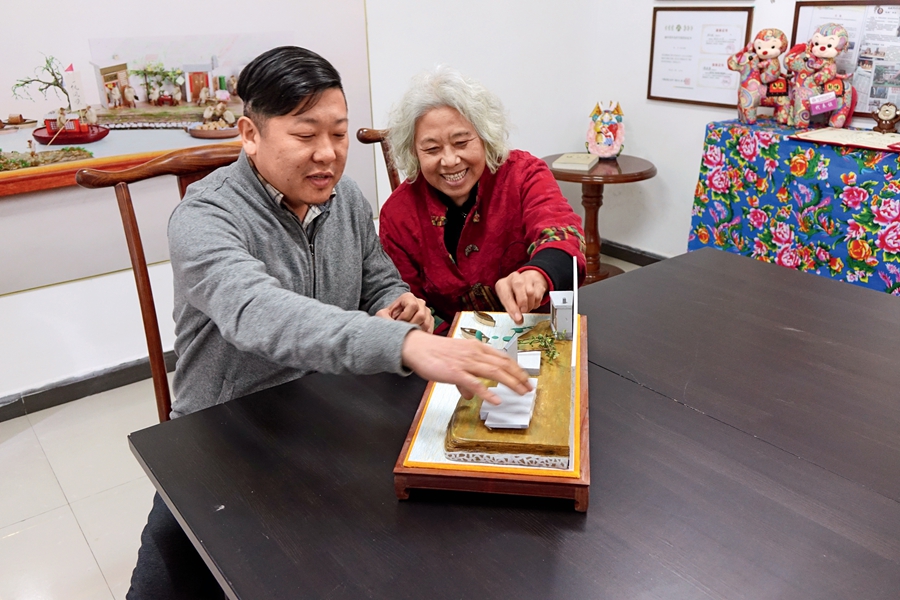Traditional Crafts Endure the Test of Time
China Today by Song Lei,April 20, 2018 Adjust font size:
I was born into a working family in Beijing in 1979, the year after China decided to open up and reform. As a child, I loved arts, especially painting, under the influence of my mother, an aficionado of traditional arts and crafts.
From Worker to Artist
My mother, 66, has always been passionate about life. She grew up in Liulichang of downtown Beijing where for centuries many high-end painting and calligraphy studios and stores for various folk arts have congregated.
The mother and son discuss techniques of making the hairy monkey.
Like most families in the 1980s, my family was strapped for cash. However, that didn’t prevent my mother from gussying up our shabby home with whatever materials were available. In the autumn, she would put a twig with attached persimmons on our table by the window, and place a few golden fallen leaves around it. As the morning sunshine peeped in, it became a picturesque scene that warmed and lightened up our home. Our old clothes and bed sheets were all reused, and even the scrap cloth was made into collages. For all these ingenious creations, mother simply said, “I saw it in my childhood.” I had no idea what life was like when she was a girl, but it must have been different from mine.
In the late 1990s, my mother’s employer, struggling financially, allowed her to retire earlier than planned. With more free time, she took to making various handicrafts, such as the Chinese Knot, flour sculptures, and fabric collages.
On one occasion, my mother met a senior artist for making hairy monkey figurines, who complained about the generational rupture in the heritage of traditional culture. He expressed the concern of having no one to carry on his trade, as it was facing a narrow market and not bringing in a livable income, and it was struggling to appeal to young learners. Reminiscent of her early years, mother decided to learn how to make the hairy monkey figurines with this artist.
A native art of Beijing, the hairy monkey is miniature figurines made of cicada slough (for the head and limbs) and Magnolia bud (for the torso). It is named so because the figurines look like hairy monkeys. It is accompanied with props that reconstruct a scene about the life in old Beijing. My mother felt cut off from the society in her retirement and was eager to find a way to vent her emotions and communicate with the world.
Due to her experience with other handicrafts, mother made swift progress, and soon became a master in the field. She was later recognized by the municipal government as an official inheritor of the hairy monkey art.
Following the State Council’s notice on enhancing protection for cultural heritage in 2006, the Chinese government has steadily garnered support for antiqued arts and crafts. Meanwhile market demands for them have been growing, bringing those ravaged by the impact of the “cultural revolution” (1966-1976) back to life.
For a long time, many old arts and crafts faded out of public views because they were void of practical functions, and weren’t able to find buyers as most people in the country were scraping by. There were some people who partook in these cultural activities, but mainly as hobbies instead of vocations. After an increase in affluence, people in China have the money to satisfy their long-oppressed cultural needs, unleashing market demands for these arts and crafts.
My mother became busy. She was invited to cultural events organized by our neighborhood and to international exchange conventions. Many primary schools in Beijing have incorporated traditional culture into their curricula, and my mother gives a hairy monkey class once a week at a local school. Her class always fills up quickly after the application opens. She also teaches in public libraries, cultural centers, and folk art museums, and has class everyday.


